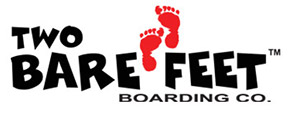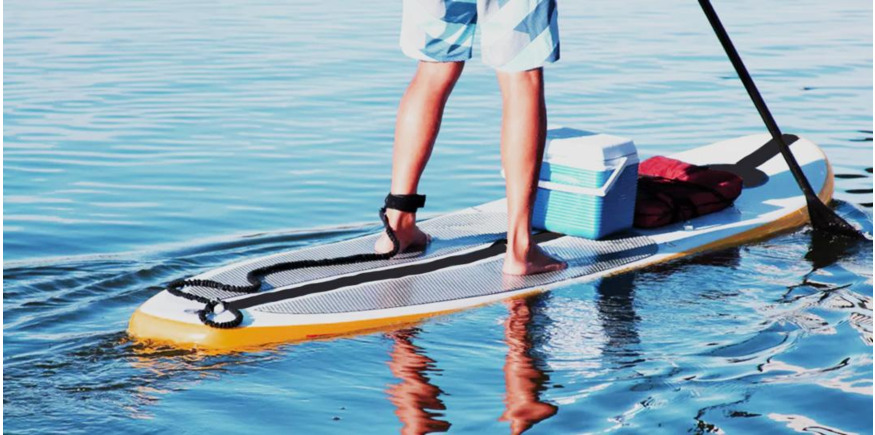However you choose to use your SUP, personal safety should always be at the forefront of the mind. In addition to wearing a PFD, one of the most sensible precautions you can take when paddling is to wear an appropriate SUP leash.
Why you must wear a SUP leash
Your board is your lifeline
In most cases, staying attached to your SUP is your best chance at returning to shore if you fall into the water. While wearing a personal floatation device is recommended, not everyone will choose to do this. As a SUP is designed to remain buoyant, it can essentially act as an over-sized PFD in the event of a paddler falling in.
Don’t leave your SUP to the waves
Keeping the board attached to oneself also negates the opportunity for it to float away. In addition to the safety aspect: making it possible to return to the board quickly, minimising exposure to potentially cold waters. It also means you won’t lose your board — along with anything else you may have stowed on deck.
The safety of others
It’s also important that your paddleboard does not become a hazard to other paddlers when loose. Staying tethered to the board minimises the chance (and amount of time) for the board to remain uncontrolled in the water.
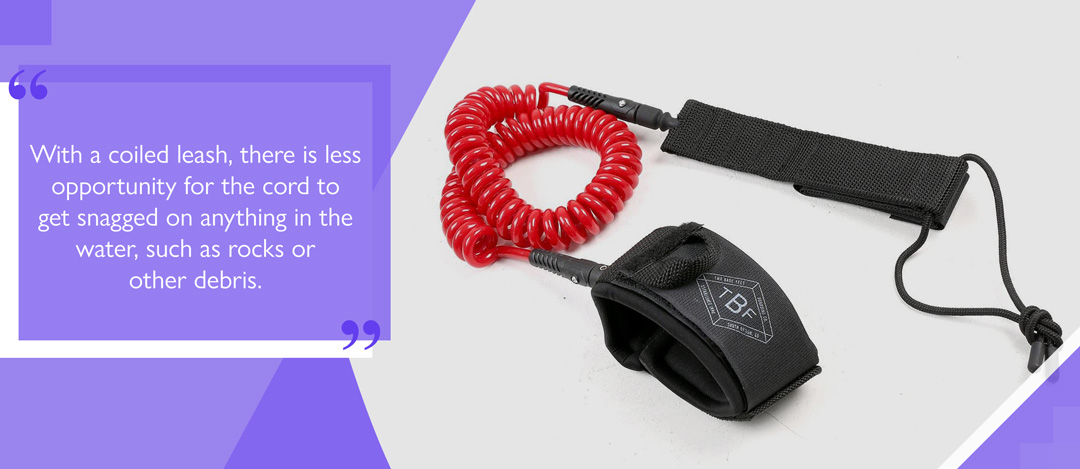
Types of SUP leashes
Coiled leashes
Coiled leashes use a cord that is tightly coiled, like old-fashioned telephone receiver flex, to compress the length of the cord. The advantage of this design is that the cord is less likely to trail in the water, which has the effect of creating drag — dampening the SUP’s forward motion. With the cord remaining on the board, there is also less opportunity for the cord to get snagged on anything in the water, such as rocks or other debris. The compressed length also makes a coiled leash less likely to present itself as a trip hazard on deck.
Coiled leashes are preferred in most SUP-based activities, particularly those occurring in calm waters, and when racing — due to the efficiency it affords movement, and the ability to quickly retrieve the board.
Beware of recoil
An important aspect of coiled leashes is how they behave under tension. When the coil is fully stretched, it will naturally ‘snap’ back into its original form. If a SUP is moving away from you, this reflex motion can end up causing injury if the board and coil suddenly return in your direction with enough force.
Straight leashes
SUP surfers wear straight leashes, as they minimise the possibility of a recoil accident. However, it is important that a SUP leash is used, and not a standard surfboard leash. These tend to be thinner and shorter, and are not suited to the size and volume of a SUP.
Straight leashes are also an option for use on flat water; they’re beginner friendly, don’t pose as much of a recoil risk, and are comfortable to wear.
Quick release waistbelts
These are not a category of leash, but rather a way of attaching to a leash that is important enough to merit its own discussion. Most quick-release belt systems are used with coiled leashes, but straight leashes can also be used. The difference is that the attachment point is around the paddler’s waist.
In an emergency, a QR leash can be detached from the paddler, freeing them from the board if faced with a dangerous situation that requires prompt action; for example, where the leash has wrapped around or snagged on an unseen hazard underwater, or the current is threatening to drag the board and its dismounted rider into an unsafe and uncontrolled situation.
Quick-release belts are activated in one of two ways: either sufficient pressure is applied on the belt attachment to cause it to separate, or the paddler must manually pull on a cord to detach the leash. The design means that the paddler won’t be trying to tug at an ankle or calf that they can’t see well when immersed in water.
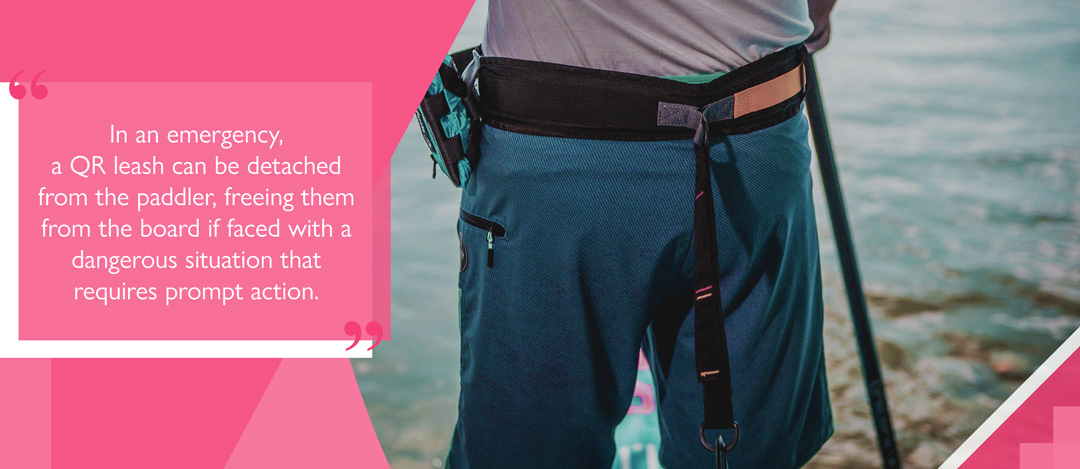
The parts of a SUP leash
Regardless of which type of leash you choose, there are a number of key components common to both.
The cord
The long length of stretchy polyurethane that takes the brunt of the stress when pulled taut. This is the main component of the leash, and the bit most paddlers may be concerned about getting caught or dragging in the water.
Cuff / ankle strap
If you’re wearing the leash around your calf or ankle, this is the part that you attach to your body. They are often composed of neoprene layers to maximise comfort when worn around your leg, and Velcro to keep the cuff secure in place.
Swivel
This is the mechanism between the cord and the cuff. It gives the leash the freedom to rotate around your leg/ankle so that you can move around easily and avoid getting the cord tangled.
Many leashes will also have a secondary swivel installed between the cord and the board attachment.
Leash string
This is the thin section of cord at the other end of the leash, which directly connects the leash to the anchoring point on the board. The leash string is made from durable ‘parachute cord’ (nylon kernmantle rope) that is tied into a knot at the end.
Rail saver
The connecting section between the leash cord and the leash string. A rail saver is designed to keep the cord attached to the board, while also protecting the board from being damaged by the cord when under tension, which may have the ability to cut into the board’s rails (hence the name).
What is the best length and thickness?
The generally accepted wisdom is that the cord, when fully extended, should be about the same length, or ideally a bit longer, than the board. This is to provide a buffer between you and the board in the event the leash recoils towards you after falling off. If the leash is short, there’s a distinct chance that you will be injured by the recoil action.
In real terms, most SUP leashes range between 8 and 10 feet in length.
Cord thickness should be judged according to where you plan to attach the cuff on your leg. Thinner leashes are more suited to wearing around the ankle. As stated before: don’t opt for a surf leash on a paddleboard — it won’t be designed for the physics of riding a SUP.
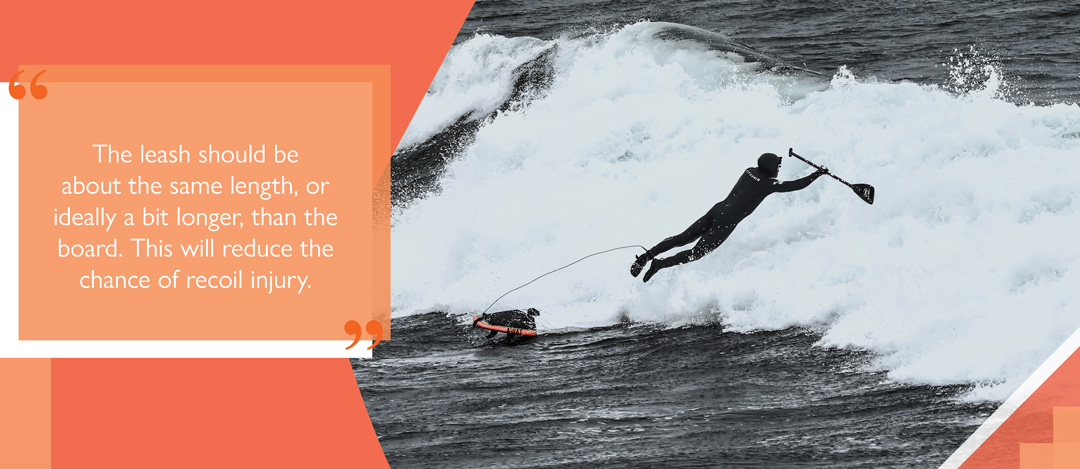
How should a SUP leash be attached to the body?
Left or right leg?
Which leg you go for will depend on which is dominant. Regular-footed paddlers (right-leg dominant) will want to attach the cuff to their right leg. Those that prefer riding goofy will want the cuff attached to the left leg. Both are dependent on which leg will be trailing to the rear of the board when adopting a staggered stance.
Ankle or calf?
This is more to do with practicality. Attaching the leash to the calf helps to keep the cord clear of the feet, which may make moving around the board easier. This is a reason given by some SUP surfers, who may need to adjust position by cross-stepping on deck.
For SUP racers, having the leash on the calf can mean less of the cord trailing in the water — a sure-fire way to slow your movement at a time when you want to minimise drag. Some racers wear a QR waistbelt for the same reason.
There is also the practicality of keeping the cuff well within reach: if it is attached to the calf, the paddler can get it to it relatively easily when they need to uncouple from the leash.
Comfort is important too
Wearing a leash attached to an ankle can be more comfortable for some. The pull and tug of the board on the calf can be significant enough to cause discomfort in the leg and knee. A thinner leash attached to the ankle, will generate a bit less stress. It’s a style suited to more casual paddling on either flatwater or waves.
Staying safe on your SUP
Looking for more information about SUP safety? Our blog contains a wealth of information to help make your experience on the water a safer one. Take a look at our post on safe wind speeds for paddleboarding to better understand how to negotiate wind conditions, or What is a buoyancy aid for a detailed look at another vital SUP accessory.
